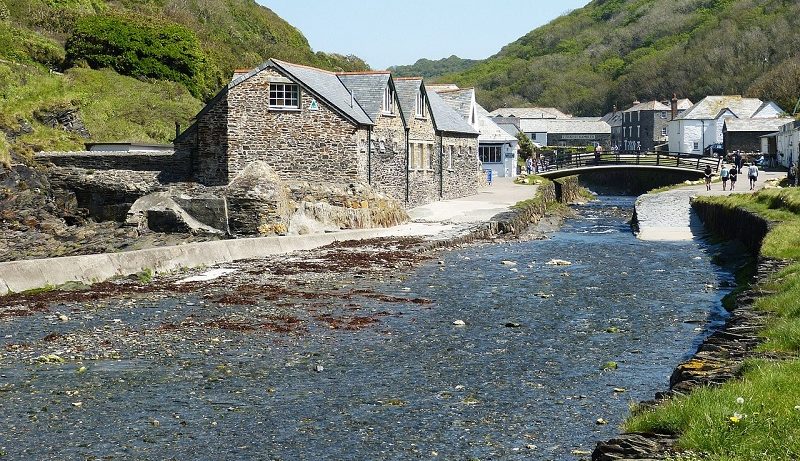Boscastle is a charming little fishing port and village approximately 14 miles south of Bude and being just 5 miles from Tintagel to the west and a similar distance from Crackington Haven to the North.
Boscastle is perhaps best known for the flooding it incurred in 2004 when the heavy rainfall led to flash floods. Cars and even buildings were washed out to sea, and the flooding trapped people in the upper rooms of houses. The landscape leading down to the sea at Boscastle is a narrow, steep valley and much of it impermeable slate. Boscastle has grown up where two rivers naturally meet and run through the village and out to sea via the narrow inlet and harbour.
The little altered quay at Boscastle was built in Elizabethan times and helped create a safe harbour. The little port was once one of Cornwall’s busiest due to the dangers of the North Cornish coast; it was a busy, bustling place. Cargo ships would head to the narrow inlet rather than attempt alternative landings. The slate from nearby slate mines was shipped out from Boscastle. The heritage of Boscastle is fascinating for such a small pretty place. Ships entering the harbour were towed in by a ‘hobbler’ boat, rowed by eight men, as additional men onshore worked ropes to keep the ship central in the channel. When they had safely anchored the ships, the men offloaded the goods onto carts, pulled by teams of strong heavy horses to cope with the steep slope out of Boscastle. The coming of the railway changed the need for a safe goods harbour, and today Boscastle is harbour to pleasure craft and small fishing boats.
The youth hostel was converted from the original stables for the cart horses. Other historical buildings from the era such as the blacksmith’s forge and the lime kiln can be identified in the harbour area, where Boscastle also has a Museum of Witchcraft which showcases a collection of objects from all around the world. The inland part of the village is much later and mainly modern houses, it does offer some stunning views before the road drops down dramatically towards sea level where it is all about the picturesque harbour. An unusual feature is a blow-hole under Penally Point at the entrance to the harbour that visibly snorts and thumps around either side of low tides and sends a horizontal jet of water almost halfway across the harbour entrance in certain conditions.
It was at Boscastle that the novelist Thomas Hardy met his wife Emma when he went there to restore St Juliot church. The secluded wildflower meadows and dramatic coastline together with Emma herself, provided Hardy with plenty of inspiration. There is the famous anecdote of the couple finding themselves locked in when they visited nearby Tintagel Castle and needing to attract attention by waving a handkerchief.
Most of the countryside in the area belongs to the National Trust. It is known for its peacefulness and abundance of wildlife. There is a small area of beach at Boscastle accessible only at low tide. For a car-friendly beach visit, nearby Crackington Haven is a small pretty, gentle beach of shingle and sand with rock pools.

